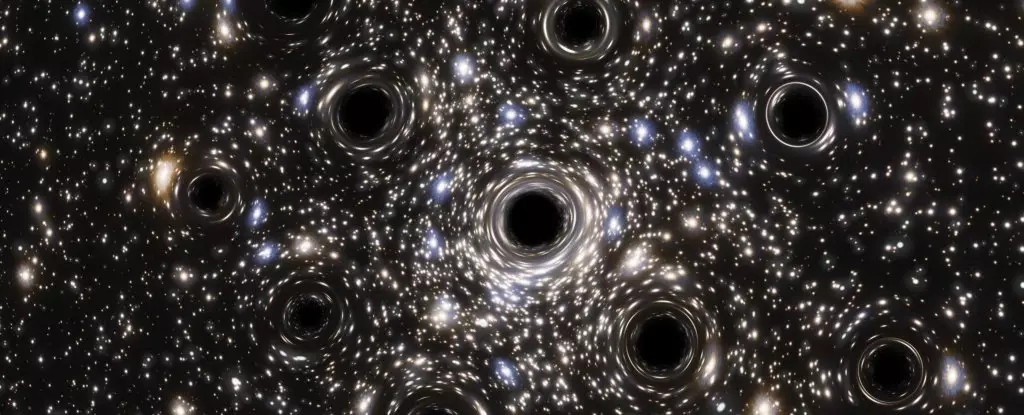The captivating image of a starry sky often hides complexities that challenge our understanding of the universe. Among these enigmas is Palomar 5, a globular cluster known for housing a potential treasure trove of stellar-mass black holes at its core. This cluster, spanning over 30,000 light-years and located approximately 80,000 light-years from Earth, serves as a crucial focal point for astronomers and astrophysicists seeking to unravel the mysteries of galactic formation and evolution.
Globular clusters, such as Palomar 5, are densely packed formations of stars, often regarded as relics from the universe’s formative years. These clusters typically consist of 100,000 to over a million stars, many of which are nearly as old as the universe itself. The Milky Way is home to more than 150 known globular clusters, which provide invaluable data for probing the history of cosmic structures and the elusive dark matter enveloping galaxies. What sets Palomar 5 apart is its distinctive stellar stream and the mysteries surrounding its formation, revealing the evolving understanding of such cosmic entities.
In contrast to globular clusters, tidal streams are elongated arrangements of stars that have recently gained attention in astronomical studies. These strands of light, previously trickier to detect, are now being documented more accurately thanks to the Gaia space observatory’s precise three-dimensional mapping of the Milky Way. The formation mechanisms of these streams remain somewhat obscure, although they may represent disrupted clusters. Mark Gieles, an astrophysicist, emphasized the need to study tidal streams in coordination with their associated stellar systems. Palomar 5, possessing both a stellar cluster and an extensive tidal stream, stands as a crucial case study.
Researchers, inspired by the idiosyncrasies of Palomar 5, employed sophisticated N-body simulations to accurately reconstruct the movements and interactions of the stars within this dynamic cluster. By incorporating the potential presence of stellar-mass black holes in their models, scientists could better explain the distribution of stars and the configuration of the tidal stream. These simulations suggested that black holes would have significantly influenced the orbital paths of surrounding stars, effectively organic slingshot maneuvers that sent stellar remnants cascading outwards.
The results were striking: the simulations indicated a population of stellar-mass black holes exceeding initial expectations by a considerable margin. Specifically, researchers found that the number of black holes in Palomar 5 is approximately three times greater than what one might anticipate in such a star cluster. Remarkably, it appears that over 20% of the cluster’s mass consists of these black holes, each weighing in at around 20 times the mass of the Sun. This finding suggests that the early evolution of clusters like Palomar 5 was fundamentally shaped by supernova explosions that birthed these black holes during its youth.
Anticipations for the future of Palomar 5 further illuminate its importance in the celestial ecosystem. Simulations suggest that within a billion years, the cluster will vanish, leaving a trail of black holes orbiting the galactic center. This notion extrapolates to a grim but fascinating fate for other globular clusters, hinting that they too may eventually evolve into stellar streams. The implications of these findings are vast, suggesting that globular clusters are fertile grounds for seeking black holes, which could eventually collide and merge, giving rise to gravitational waves and other cosmic phenomena.
As researchers like Fabio Antonini highlight the potential of globular clusters as birthplaces for binary black hole mergers, it begs the question of how many more stellar-mass black holes remain unnoticed within known clusters. The mysteries of Palomar 5 may just be scratching the surface. As we delve deeper into the cosmos, the secrets hidden among the stars await, beckoning for further exploration and understanding of the intricate dance of celestial bodies and the darker realms of black hole dynamics. This enchanting journey into the heart of Palomar 5 not only enriches our knowledge of black holes but also illuminates the ongoing saga of the universe itself.


Leave a Reply